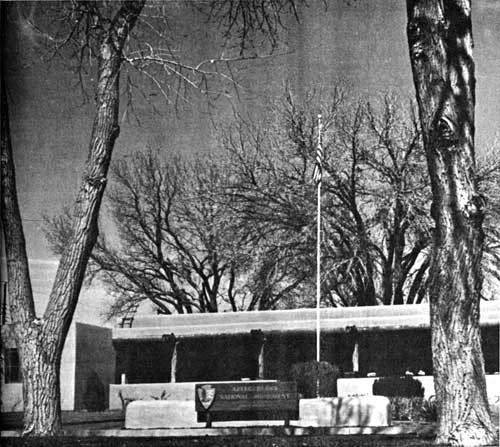|
AZTEC RUINS National Monument |
 |

The visitor center at Aztec Ruins.
Establishment and Administration
Aztec Ruins National Monument was established by Presidential proclamation on January 24, 1923. Most of the land was donated to the Government by the American Museum of Natural History in 1921, 1928, and 1930. In 1931 an additional 6.8 acres was purchased by the Federal Government from the heirs of H. D. Abrams who had originally owned the entire site. And in 1947, the Southwestern Monuments Association purchased the 1.2 acres containing the Hubbard Mound and presented it to the Government. The monument, now containing 27.1 acres, is administered by the National Park Service, U.S. Department of the Interior.
Created in 1849, the Department of the Interior—America's Department of Natural Resources—is concerned with the management, conservation, and development of the Nation's water, wildlife, mineral, forest, and park and recreational resources. It also has major responsibilities for Indian and Territorial affairs.
As the Nation's principal conservation agency, the Department works to assure that nonrenewable resources are developed and used wisely, that park and recreational resources are conserved for the future, and that renewable resources make their full contribution to the progress, prosperity, and security of the United States—now and in the future.
A superintendent, whose address is Rt. 1, Box 101, Aztec, N. Mex., is in immediate charge of Aztec Ruins National Monument.
Other monuments in the National Park System also preserve the remains of different types of prehistoric ruins. Two of these, Mesa Verde National Park, Colo., and Chaco Canyon National Monument, N. Mex., contain remains of Indian groups which seem to have been related to those at Aztec Ruins National Monument. A third, Bandelier National Monument, N. Mex., contains remains of another type but still may be one of the areas in the Rio Grande drainage in which some of the Indians lived after they abandoned the San Juan region.

|

|
|
Last Modified: Sat, Jan 13 2001 10:00:00 am PDT |


